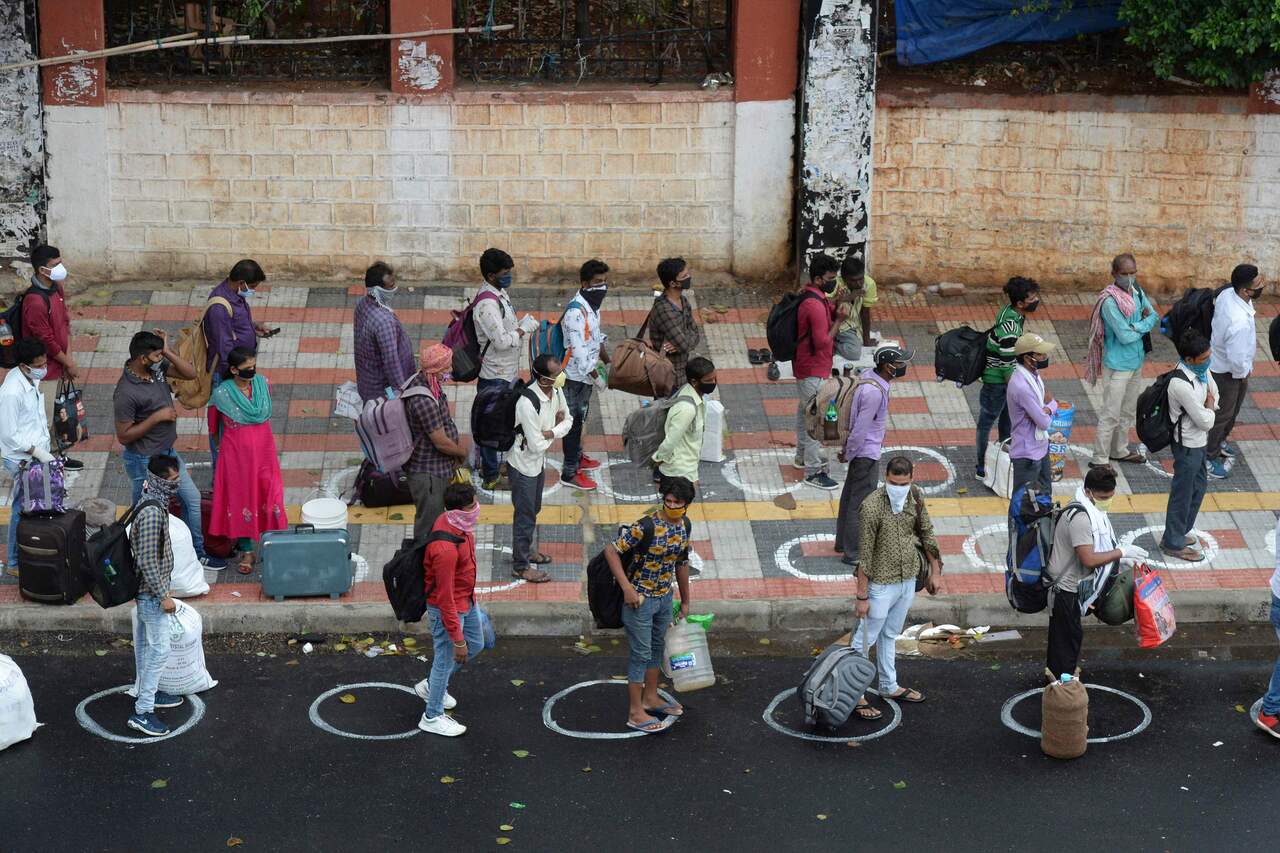India eases lockdown even as it reports more new coronavirus cases
Sign up now: Get insights on Asia's fast-moving developments

People wait to board a train at a railway station in Secunderabad, India, on June 2, 2020.
PHOTO: AFP
Follow topic:
NEW DELHI - India on Tuesday (June 2) allowed restaurants and malls to reopen and a near free movement of people, including to places of worship.
While the metro is still closed, buses started running again and rail services resumed fully on Monday.
The moves come two months after a stringent lockdown that brought economic activities to a complete halt and are the latest easing of restrictions amid an assessment that Indians have to start living with the coronavirus threat.
The Covid-19 outbreak is still far from easing in India, which has climbed two spots to become the seventh-most affected country in terms of coronavirus cases in the world.
India has more than 198,700 cases, with the number of active ones at 97,581, with 5,598 deaths in a population of 1.3 billion. Since Sunday, it has reported 8,000 new cases a day.
One of the worst-hit cities is Mumbai, the country's financial capital, with 41,099 cases, and where there have been reports of patients sleeping on floors waiting for hospital beds to open up.
Prime Minister Narendra Modi urged people to remain vigilant, maintain a six-foot (1.8m) distance from one another and stay at home as much as possible.
"While it is true that the coronavirus has slowed down our growth, India has now left the lockdown behind and has entered Unlock Phase 1... India took the right steps at the right time. When we compare our country to others, we can realise how the lockdown has helped us," said Mr Modi in an address to business leaders on Tuesday.
Officials have said that it is not feasible to continue the lockdown, which is already causing hardship from job losses in every sector, threat of business closures and a slowing economy that slipped to 3.1 per cent in the January-March quarter.
There has been some positive news on the coronavirus fight, with the recovery rate improving from 11.42 per cent on April 15 to 48.07 per cent, and the death rate declining to 2.83 per cent from 3.3 per cent on April 15, according to the federal health ministry.
India had imposed the lockdown at the end of March, giving people just four hours' notice.
Despite the latest measures, international flights remain grounded, a curfew is in place from 9pm to 5am and educational institutes remain shut, as are metro services.
Restrictions remain in containment areas, which are pockets in cities and towns that have recorded a high number of Covid-19 cases.
Mahasashtra, whose capital is the hard-hit Mumbai, is allowing shops to open on alternate days and private offices to open with 10 per cent of staff.
The government has been criticised over its handling of the lockdown, which has led to immense human suffering with daily wage and migrant labourers losing their jobs and undertaking long and hazardous journeys home on foot as transport was shut down.
The fallout has continued to play out across the country, triggering the biggest reverse migrations seen in India in recent years.
Footage of a toddler trying to wake up his dead mother at a train station in Bihar state haunted the country, underlining the tremendous suffering caused to the poor, who continue to queue up at bus and train stations to return home.
The cross-country movement is also leading to health concerns over the possibility of the virus moving from urban hot spots to rural areas where a mass outbreak could undermine efforts to contain the virus.
The north-eastern state of Sikkim, which had zero cases through the pandemic, registered one case from a man who returned to the state.
"The returning migrants are now taking infection to each and every corner of the country; mostly to rural and peri-urban areas, in districts with relatively weak public health systems," the Indian Public Health Association, Indian Association of Preventive and Social Medicine and Indian Association of Epidemiologists said in a joint statement. Peri-urban areas are located adjacent to a city or urban places.
Some believe India is still not doing enough testing for cases.
"The number of people tested till Tuesday was 3.8 million. Even 1 per cent of the population is 14 million. Only 0.25 per cent of the total population has been tested, so 99.8 per cent is a big black box," noted epidemiologist Dr T. Jacob John.
"How many are asymptomatic, nobody will ever know."
Epidemiologists and doctors believe India will reach its peak between June and August, and that the numbers will continue to go up in the interim.
Dr Ravi Dosi, head of department of Sri Aurobindo Institute of Medical Sciences in the central city of Indore, said there has been no let-up in the number of Covid-19 cases.
The situation "is not improving", he said.
"We are seeing an increasing number of cases and higher mortality. We are getting four to five times more patients," he added. The institute's hospital is treating 750 cases, with 50 new admissions on average each day.
"I feel once the lockdown eases, the cases are going to increase for the next month," said Dr Dosi.

